Cameron Browne
Proof Number Based Monte-Carlo Tree Search
Mar 16, 2023



Abstract:This paper proposes a new game search algorithm, PN-MCTS, that combines Monte-Carlo Tree Search (MCTS) and Proof-Number Search (PNS). These two algorithms have been successfully applied for decision making in a range of domains. We define three areas where the additional knowledge provided by the proof and disproof numbers gathered in MCTS trees might be used: final move selection, solving subtrees, and the UCT formula. We test all possible combinations on different time settings, playing against vanilla UCT MCTS on several games: Lines of Action ($7$$\times$$7$ and $8$$\times$$8$), MiniShogi, Knightthrough, Awari, and Gomoku. Furthermore, we extend this new algorithm to properly address games with draws, like Awari, by adding an additional layer of PNS on top of the MCTS tree. The experiments show that PN-MCTS confidently outperforms MCTS in 5 out of 6 game domains (all except Gomoku), achieving win rates up to 96.2% for Lines of Action.
Measuring Board Game Distance
Jan 10, 2023Abstract:This paper presents a general approach for measuring distances between board games within the Ludii general game system. These distances are calculated using a previously published set of general board game concepts, each of which represents a common game idea or shared property. Our results compare and contrast two different measures of distance, highlighting the subjective nature of such metrics and discussing the different ways that they can be interpreted.
Combining Monte-Carlo Tree Search with Proof-Number Search
Jun 08, 2022



Abstract:Proof-Number Search (PNS) and Monte-Carlo Tree Search (MCTS) have been successfully applied for decision making in a range of games. This paper proposes a new approach called PN-MCTS that combines these two tree-search methods by incorporating the concept of proof and disproof numbers into the UCT formula of MCTS. Experimental results demonstrate that PN-MCTS outperforms basic MCTS in several games including Lines of Action, MiniShogi, Knightthrough, and Awari, achieving win rates up to 94.0%.
The Ludii Game Description Language is Universal
May 03, 2022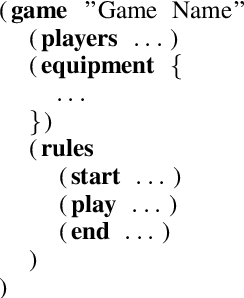
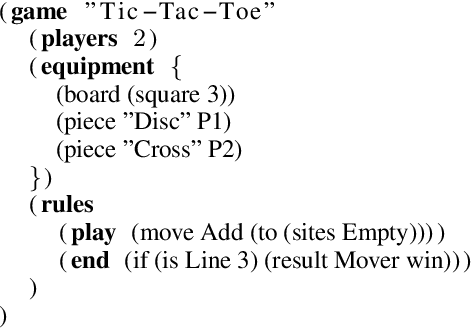
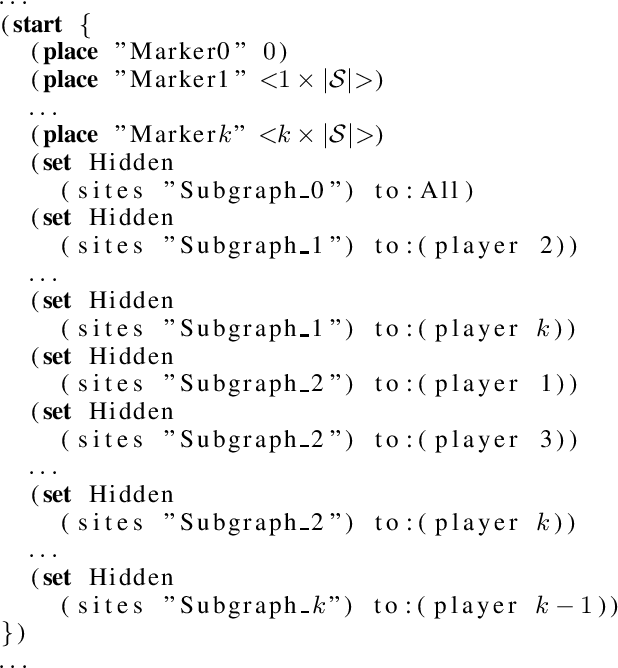
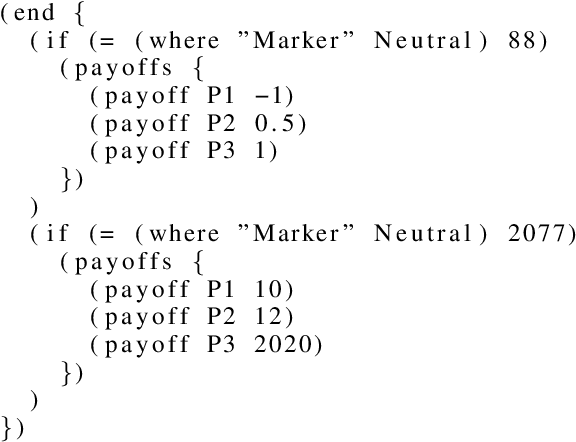
Abstract:There are several different game description languages (GDLs), each intended to allow wide ranges of arbitrary games (i.e., general games) to be described in a single higher-level language than general-purpose programming languages. Games described in such formats can subsequently be presented as challenges for automated general game playing agents, which are expected to be capable of playing any arbitrary game described in such a language without prior knowledge about the games to be played. The language used by the Ludii general game system was previously shown to be capable of representing equivalent games for any arbitrary, finite, deterministic, fully observable extensive-form game. In this paper, we prove its universality by extending this to include finite non-deterministic and imperfect-information games.
Spatial State-Action Features for General Games
Jan 17, 2022Abstract:In many board games and other abstract games, patterns have been used as features that can guide automated game-playing agents. Such patterns or features often represent particular configurations of pieces, empty positions, etc., which may be relevant for a game's strategies. Their use has been particularly prevalent in the game of Go, but also many other games used as benchmarks for AI research. Simple, linear policies of such features are unlikely to produce state-of-the-art playing strength like the deep neural networks that have been more commonly used in recent years do. However, they typically require significantly fewer resources to train, which is paramount for large-scale studies of hundreds to thousands of distinct games. In this paper, we formulate a design and efficient implementation of spatial state-action features for general games. These are patterns that can be trained to incentivise or disincentivise actions based on whether or not they match variables of the state in a local area around action variables. We provide extensive details on several design and implementation choices, with a primary focus on achieving a high degree of generality to support a wide variety of different games using different board geometries or other graphs. Secondly, we propose an efficient approach for evaluating active features for any given set of features. In this approach, we take inspiration from heuristics used in problems such as SAT to optimise the order in which parts of patterns are matched and prune unnecessary evaluations. An empirical evaluation on 33 distinct games in the Ludii general game system demonstrates the efficiency of this approach in comparison to a naive baseline, as well as a baseline based on prefix trees.
General Board Geometry
Nov 22, 2021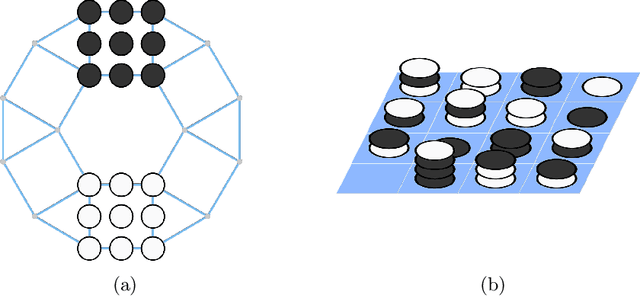
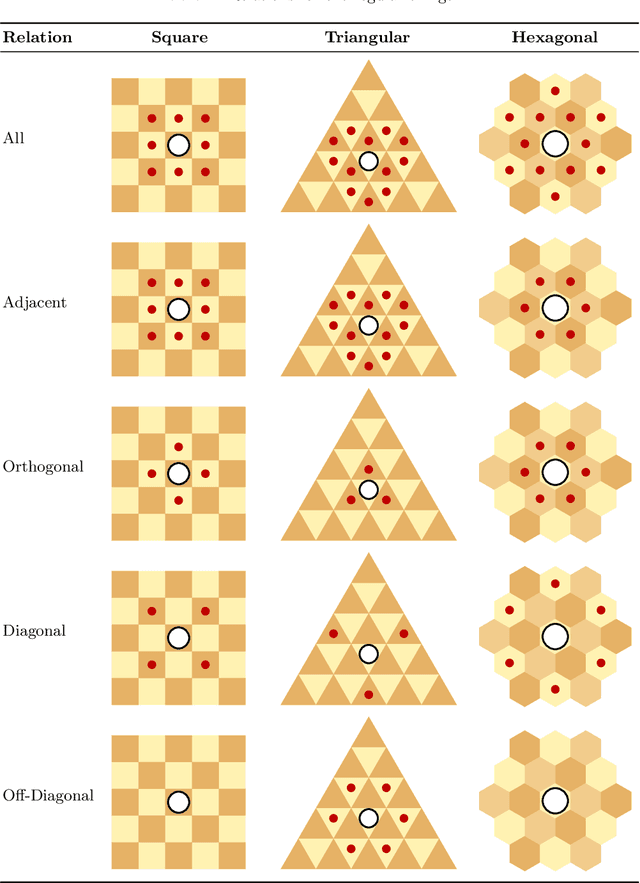
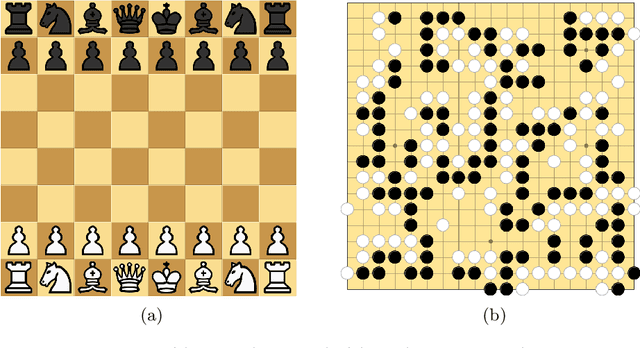
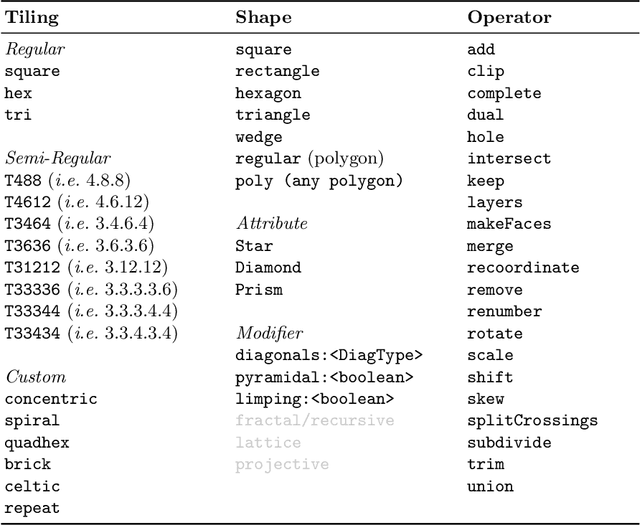
Abstract:Game boards are described in the Ludii general game system by their underlying graphs, based on tiling, shape and graph operators, with the automatic detection of important properties such as topological relationships between graph elements, directions and radial step sequences. This approach allows most conceivable game boards to be described simply and succinctly.
Optimised Playout Implementations for the Ludii General Game System
Nov 04, 2021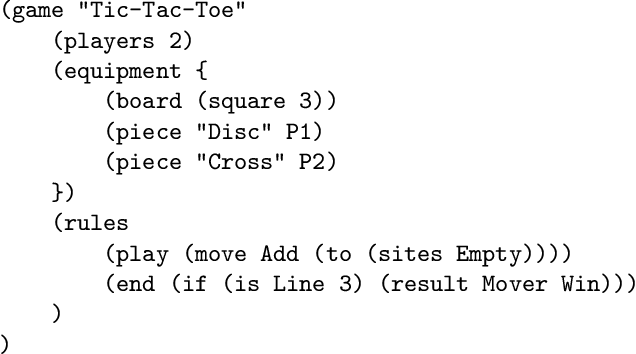

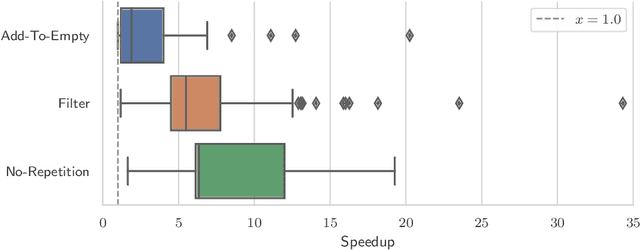
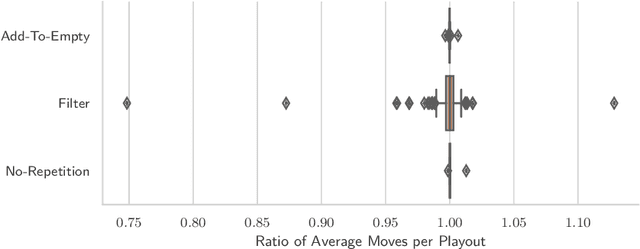
Abstract:This paper describes three different optimised implementations of playouts, as commonly used by game-playing algorithms such as Monte-Carlo Tree Search. Each of the optimised implementations is applicable only to specific sets of games, based on their rules. The Ludii general game system can automatically infer, based on a game's description in its general game description language, whether any optimised implementations are applicable. An empirical evaluation demonstrates major speedups over a standard implementation, with a median result of running playouts 5.08 times as fast, over 145 different games in Ludii for which one of the optimised implementations is applicable.
Automatic Generation of Board Game Manuals
Sep 20, 2021



Abstract:In this paper we present a process for automatically generating manuals for board games within the Ludii general game system. This process requires many different sub-tasks to be addressed, such as English translation of Ludii game descriptions, move visualisation, highlighting winning moves, strategy explanation, among others. These aspects are then combined to create a full manual for any given game. This manual is intended to provide a more intuitive explanation of a game's rules and mechanics, particularly for players who are less familiar with the Ludii game description language and grammar.
General Board Game Concepts
Jul 02, 2021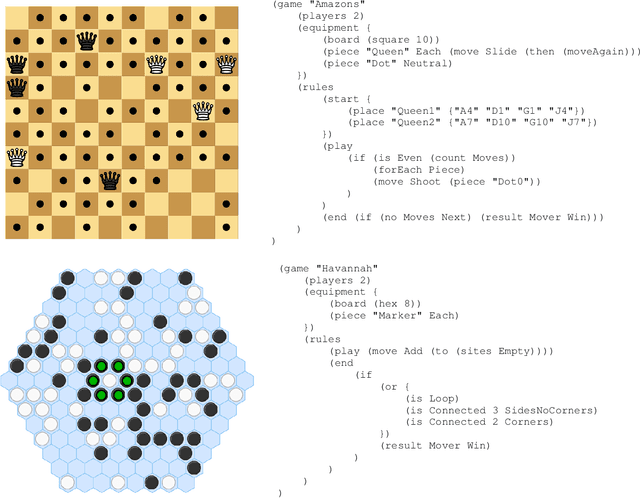

Abstract:Many games often share common ideas or aspects between them, such as their rules, controls, or playing area. However, in the context of General Game Playing (GGP) for board games, this area remains under-explored. We propose to formalise the notion of "game concept", inspired by terms generally used by game players and designers. Through the Ludii General Game System, we describe concepts for several levels of abstraction, such as the game itself, the moves played, or the states reached. This new GGP feature associated with the ludeme representation of games opens many new lines of research. The creation of a hyper-agent selector, the transfer of AI learning between games, or explaining AI techniques using game terms, can all be facilitated by the use of game concepts. Other applications which can benefit from game concepts are also discussed, such as the generation of plausible reconstructed rules for incomplete ancient games, or the implementation of a board game recommender system.
General Game Heuristic Prediction Based on Ludeme Descriptions
May 26, 2021


Abstract:This paper investigates the performance of different general-game-playing heuristics for games in the Ludii general game system. Based on these results, we train several regression learning models to predict the performance of these heuristics based on each game's description file. We also provide a condensed analysis of the games available in Ludii, and the different ludemes that define them.
 Add to Chrome
Add to Chrome Add to Firefox
Add to Firefox Add to Edge
Add to Edge